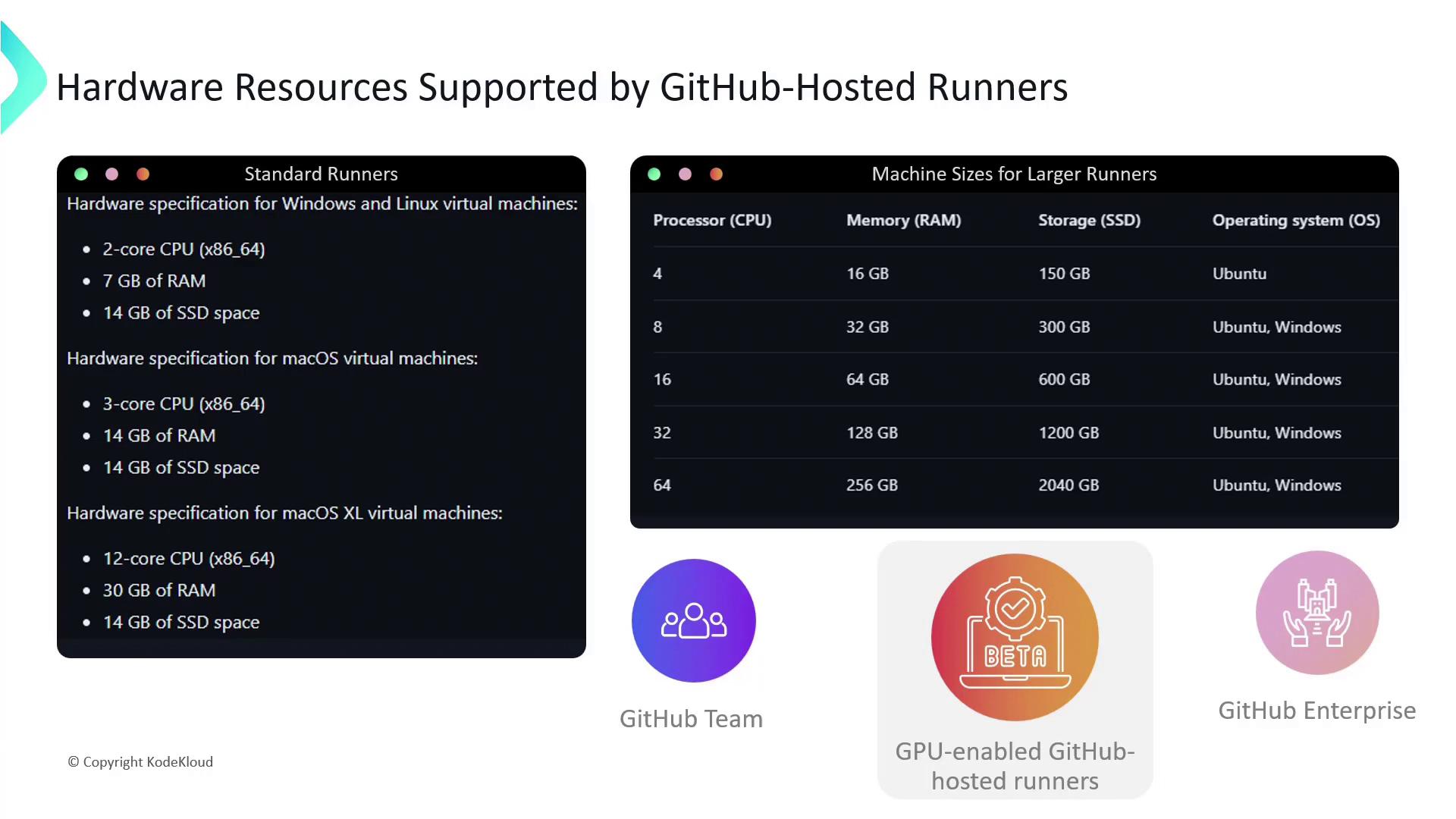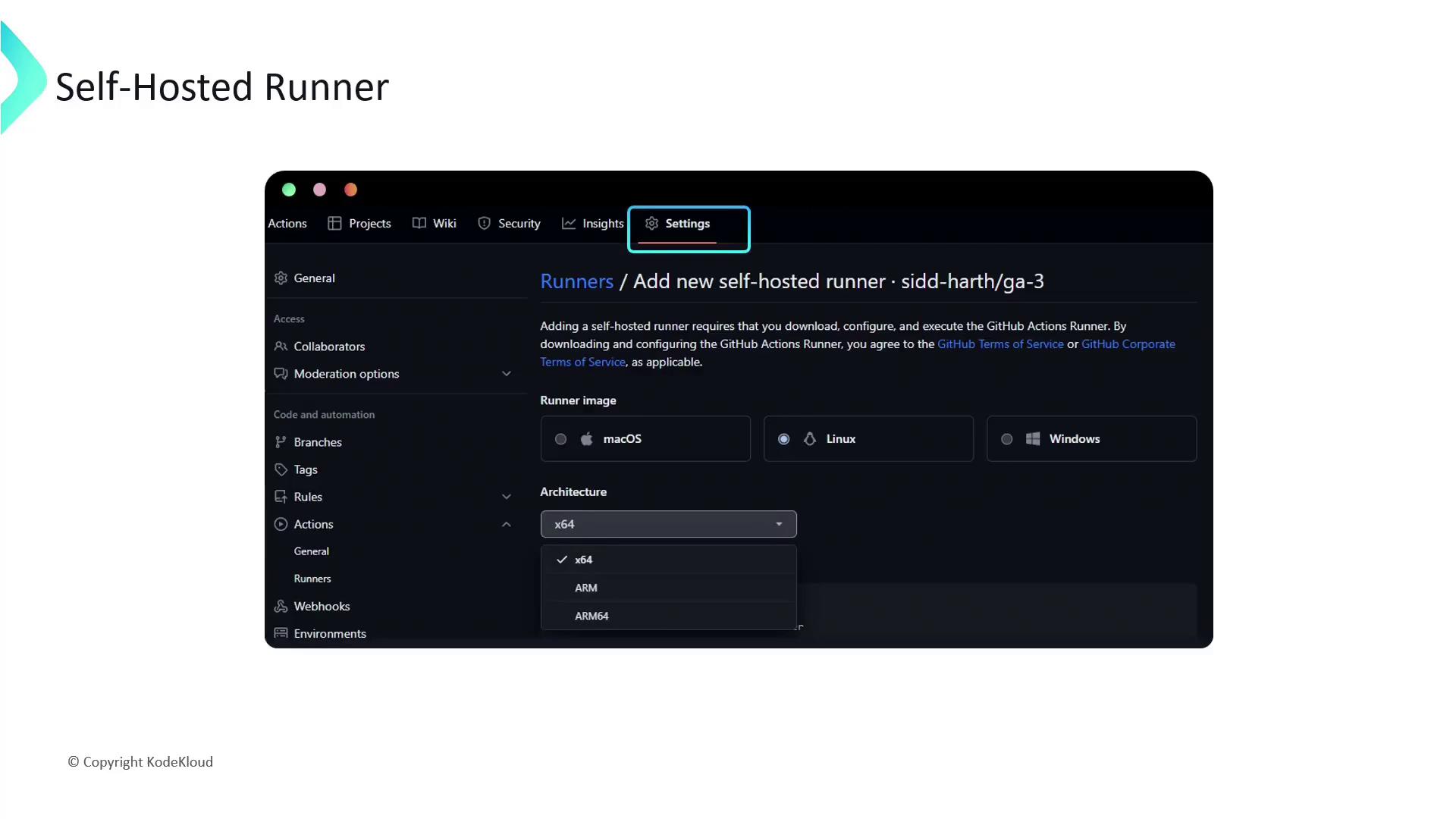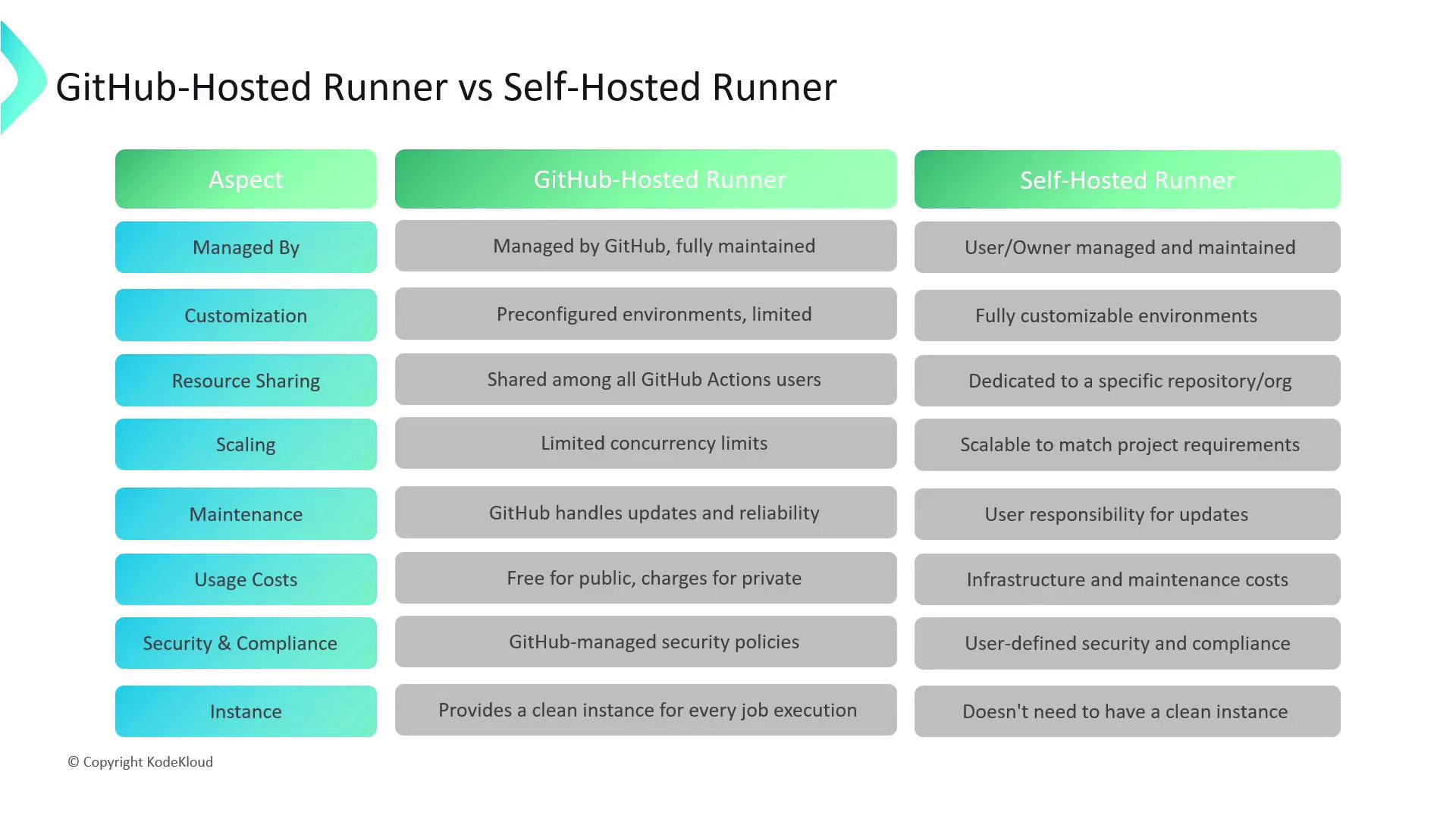GitHub Actions
Self Hosted Runner
Types of Runners
In this article, we’ll explore the different types of GitHub Actions runners available for your workflows. GitHub Actions runners execute jobs by automatically cloning your repository, installing dependencies, and running your specified commands. You can choose between GitHub-hosted runners or self-hosted runners depending on your needs.
GitHub-Hosted Runners
GitHub-hosted runners are virtual machines maintained by GitHub. Each time a workflow is triggered, you get a fresh environment with pre-installed tools, reducing setup time and maintenance overhead.
Supported Environments
- Ubuntu (ubuntu-latest, ubuntu-22.04, ubuntu-20.04)
- Windows (windows-latest, windows-2019)
- macOS (macos-latest, macos-11)
Example: Matrix Build Workflow
The following workflow runs unit tests across multiple OS environments using job matrices:
name: Cross-Platform Tests
on: [push, pull_request]
jobs:
unit-tests:
name: Unit Tests on ${{ matrix.os }}
runs-on: ${{ matrix.os }}
strategy:
matrix:
os: [ubuntu-latest, macos-latest, windows-latest]
steps:
- name: Checkout Code
uses: actions/checkout@v3
- name: Setup Node.js on ${{ matrix.os }}
uses: actions/setup-node@v3
with:
node-version: '16'
- name: Run Tests
run: npm test
GitHub-hosted runners are available in two performance tiers:
- Standard runners: Suitable for most CI/CD tasks with moderate CPU, memory, and SSD.
- Larger runners: (GitHub Teams and Enterprise Cloud) Offer more CPU cores, RAM, and disk space.
Note
GPU-enabled GitHub-hosted runners are currently in beta. Apply for the beta program if you require GPU resources.

Self-Hosted Runners
Self-hosted runners run on machines that you provision and manage. They provide full control over hardware, operating system, and installed software—ideal for custom requirements or compliance needs.
Key Benefits
- Custom OS and software configurations
- Compliance with strict security policies
- Dedicated compute resources (no shared queue delays)
- Horizontal scaling and autoscaling
- Geographic placement for low-latency or data residency
Self-hosted runners can be registered at the repository, organization, or enterprise level. To add a runner at the repository level:
- Navigate to Settings → Actions → Runners.
- Click Add runner, then select your operating system and architecture.

Installation and Configuration
Follow these steps to install and configure a self-hosted runner:
# 1. Create and navigate to the runner directory
mkdir actions-runner && cd actions-runner
# 2. Download the runner package
curl -L https://github.com/actions/runner/releases/download/v2.309.0/actions-runner-linux-x64-2.309.0.tar.gz \
--output actions-runner-linux-x64-2.309.0.tar.gz
# 3. Extract the archive
tar xzf actions-runner-linux-x64-2.309.0.tar.gz
# 4. Configure the runner (replace placeholders)
./config.sh --url https://github.com/OWNER/REPOSITORY --token YOUR_TOKEN
# Follow prompts to:
# - Select runner group (press Enter for Default)
# - Name the runner (e.g., linux-gpu-runner)
# 5. Start the runner
./run.sh
Sample output:
√ Connected to GitHub
Current runner version: '2.309.0'
2023-09-15 07:04:23Z: Listening for Jobs
To use your self-hosted runner in a workflow, specify its labels in the runs-on field:
jobs:
build:
runs-on: [self-hosted, Linux, X64, gpu]
steps:
- uses: actions/checkout@v3
- run: echo "Running on a self-hosted GPU runner"
Warning
Maintaining self-hosted runners requires you to manage updates, security patches, and uptime. Ensure you have monitoring and backup strategies in place.
Comparison: GitHub-Hosted vs. Self-Hosted

| Feature | GitHub-Hosted | Self-Hosted |
|---|---|---|
| Management | Maintained by GitHub | Managed by you or your organization |
| Customization | Predefined environments | Fully customizable |
| Resource Sharing | Shared pool with concurrency limits | Dedicated resources |
| Scaling | Fixed concurrency | Dynamic scaling |
| Maintenance | Automatic updates by GitHub | Manual updates and patching |
| Usage Costs | Free for public, paid quotas for private | Infrastructure & maintenance costs |
| Security & Compliance | GitHub’s security policies | Your own security measures |
| Instance Handling | Fresh VM per job | Persistent runner for multiple jobs |
Links and References
- GitHub Actions Runners Documentation
- Hosting your own runners
- Job Matrices in GitHub Actions
- GPU Beta Program
Watch Video
Watch video content